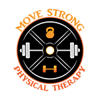Myths About ACL Rehab Part II
ACL (Anterior Cruciate Ligament) surgeries are not all the same and the rehab that accompany those surgeries are also not the same from one athlete to the next. Finding a PT who understands the surgery and the rehab throughout the entire recovery process is key to optimize where you want to be.
Be sure to check out Myths About ACL Rehab Part I HERE.
After rehabbing countless ACL reconstructions, there are many myths that are accompanied with this type of injury and rehab. Let’s discuss the Myths About ACL Rehab Part II.
Myth #1. “I just need to train my glutes and hamstrings and I will be good to get back to sport.”
Yes, glutes and hamstrings are very important for lower leg and hip control when on 1 leg. The glutes control hip and trunk rotation and in turn lower leg rotation or help to resist excessive movement of the lower leg. Having strong glutes are very important. Good hamstring strength is also important because the hamstring acts a stabilizer to resist anterior tibial translation. Basically, it resists the tibia (shin bone) from traveling forward and stressing the ACL.


But, there are other muscles of the legs for a reason. We want to make sure we are training not just the glutes and hamstrings, but also the Quadriceps (Quads) and the Gastrocnemius (Calves).


Quad and calf strength is key throughout the rehab as well as when an athlete is returning to sport. Having sufficient quad and calf strength is important to establish a solid foundation of strength so that the athlete can produce force as well as be able to absorb if efficiently vs placing it on the knee. As an athlete returns to jumping and running, great quad and calf strength is important to stabilize the knee and absorb the force that running, jumping, and cutting place on the leg.
Myth #2: Run First, Jump Second
This is something that we have changed recently since we are constantly trying to improve our craft and in turn help our athletes.
For the longest time, we would have our athletes jog first and then start jumping after they have completed their return to run program.
But, after careful thought and learning more, we have decided that running is basically many little jumps sequenced together.

It is important to train the athlete to produce and absorb force appropriately prior to ever thinking about running.
What does that all mean? Incorporating drills that train the athlete what it is like to have an increased amount of force going through their legs so when they do start running, their body and knee has had some expsosure to that.
Drills we like to incorporate are:
Single Leg Drop Squats with Chop
Pogo Jumps, Forward and Lateral Line Hops
As well as many other similar drills. These can be a great bridge to help an athlete get used to the increased force that accompanies running. It would be similar to gradually adding weight or intensity with weight training. You wouldn’t go from 135 to 225 without lifting weights in between those 2 weights.
By gradually increasing an athlete’s capacity to higher levels of stress can help them adapt and tolerate higher level activities better vs skipping steps and potentially having setbacks down the road.
Myth #3: “Just Get Strong”
Strength is important. Getting stronger is even more important after an ACL reconstruction because typically an athlete goes into surgery with some weaknesses due to inactivity, pain, swelling, etc. But also, the athlete has been recovering from a surgery so having months and months of preparation in the likes of strength and conditioning is key.
But, just telling and athlete to “get stronger” can be misleading. Like we said before, getting stronger is key, but would you prefer an athlete to be:
Strong?
or
Fast?
We say BOTH. Being strong is important for sport in order to be able to produce force, but also be able to be resilient to the stresses sport and life place on an athlete. We think of strength as injury resiliency.
So, with training, we want to make sure we are focusing not just on strength, but also power work.
Movements such as:
Lateral Sled Sprints
Speed Rear Foot Elevated Split Squats/Sled Sprints
These are just a few examples. Power work consists of lifting lighter weight faster compared to some strength training methods of just lifting heavy all the time. Incorporating speed work into a strength and conditioning program after an ACL reconstruction is key to help prepare the athlete to not just be strong, but fast and powerful.
Make sure to check out Part I HERE for the first installment of Myths About ACL Rehab. If you have any questions, don’t hesitate to reach out to us on our Contact Page.



